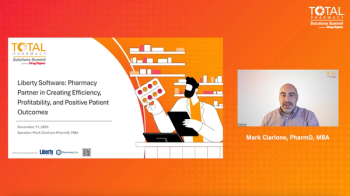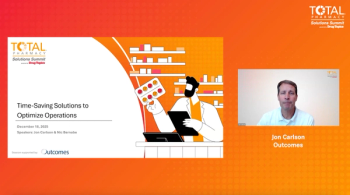
Paving the Way: Transition from Community to Health System Pharmacy Practice
Making a smooth transition from community pharmacy to health system pharmacy practice is possible, especially for those with marketable skills.
Are you a community pharmacist looking to explore a career change? Are you curious what the market looks like in other areas of pharmacy? Perhaps you’re interested in exploring health-system career options, but not sure where to start?
Marie-Elsie Ade, PharmD, MHA, MSBI, director of pharmacy for Baptist Health South Florida-Homestead Hospital in Homestead, Florida, addressed all of these questions during her presentation on transitioning from community to health system pharmacy at the American Pharmacists Association (APhA) 2022 Annual Meeting & Exposition,1 where she reviewed tips and looked at the tools needed to help pharmacists make the career move.
According to the Bureau of Labor and Statistics, the pharmacy profession—with pharmacists in particular—is seeing a decrease of 2% even though more jobs are available; that figure began dropping even before the pandemic.
“Why would you want to be a pharmacist or transition from community pharmacy to health system pharmacy with such a bleak outlook as opposed to becoming a theatrical makeup artist?” Ade asked. After all, she added, their salary is $106,000 and their growth outlook will increase by 37 percent. The pharmacy profession, on the other hand, is not seeing those numbers.
Among some retail pharmacists, there is a perception that hospital and health system pharmacists don’t have the same levels of stress, and went over the reasons people believe that—some true, some false. She discussed her own experience working retail, filling an average of 200 prescriptions a day with only 1 cashier—who was not available during the busiest hours between 5:00 and 9:00 PM.
“Burnout can lead to fatigue and can lead to high risk of stroke,” she said. “The [WHO] did a study that showed that working more than 55 hours a week will lead to [a] 35% higher risk of stroke and 17% higher risk of dying from heart disease.”
Another reason for moving to health system pharmacy, she noted, is a higher salary. While health system pharmacists start at $96,000 compared with retail that starts at $95,000, growth possibilities show that health system pharmacists will end up making $150,000 compared with $126,000—and in some states, salaries are even higher.
The question of work/life balance is important as well, with the pandemic showing many that money is not everything, so this is another consideration that plays an important role in making a career choice and a possible change.
Abe added that a Flex Jobs study found that 68% of workers want a better work/life balance and flexibility and will take a lower salary if that means that they get to work wherever they want or for reasonable hours. “Stability is one of the reasons we might want to move from retail community to a health system,” she said. “With a health system pharmacy, you have a more stable schedule that you can do.”
If you’ve made the decision to leave, what are the next steps? Ade turned her attention to this question next, and noted that it starts with looking at your strengths, skills, perceived weaknesses, available opportunities and threats, as well as the ability to move on. One must also look at why they are dissatisfied, why they want to move and the pros and cons of making such a move. She suggests that pharmacists keep a journal to organize all their thoughts in order to make a well-informed decision when it’s time to move.
“You may think that you don’t have the skills necessary for the position; however, you bring more to the table than you think,” Ade said. “Don’t be discouraged. You have skills that hospitals, and even residents don’t have, because you have real world experience with those skills.”
When discussing opportunities, Ade noted that right now, the field of pharmacy informatics is booming, and a wanted skill set is pharmacists who can act as translators between IT and clinical positions. She also suggested reading the major journals to learn the latest trends of the profession and what skills pharmacists might need in the future. The Bureau of Labor and Statistics is another excellent tool to learn about salaries and the pharmacy positions available and growing.
Armed with that information, pharmacists can figure out where they stand and their most marketable skills. For instance, not many pharmacists are diabetes educators. “[B]eing a pharmacist and a diabetic educator will really enhance your marketability,” Ade said. “There are a number of certifications you can obtain that can bring you up and make you competitive.”
After all, one might be competing against people who have residency, and feel they can’t move forward. Ade said it doesn’t matter as much as you may think if you market yourself correctly. That may mean starting on a night shift or working swing shifts—shifts that are often undesirable, but that can get a health system hopeful through the door. Ade also suggested looking at smaller health systems to break into a hospital setting.
“The barriers are achievable if you put in the work,” she said.
Reference
Ade M-E. Transitioning from community pharmacy to health-system pharmacy. Presented at: American Pharmacists Association 2022 Annual Meeting and Exposition; March 18-21, 2022; San Antonio, TX.
Newsletter
Pharmacy practice is always changing. Stay ahead of the curve with the Drug Topics newsletter and get the latest drug information, industry trends, and patient care tips.











































































































































































































